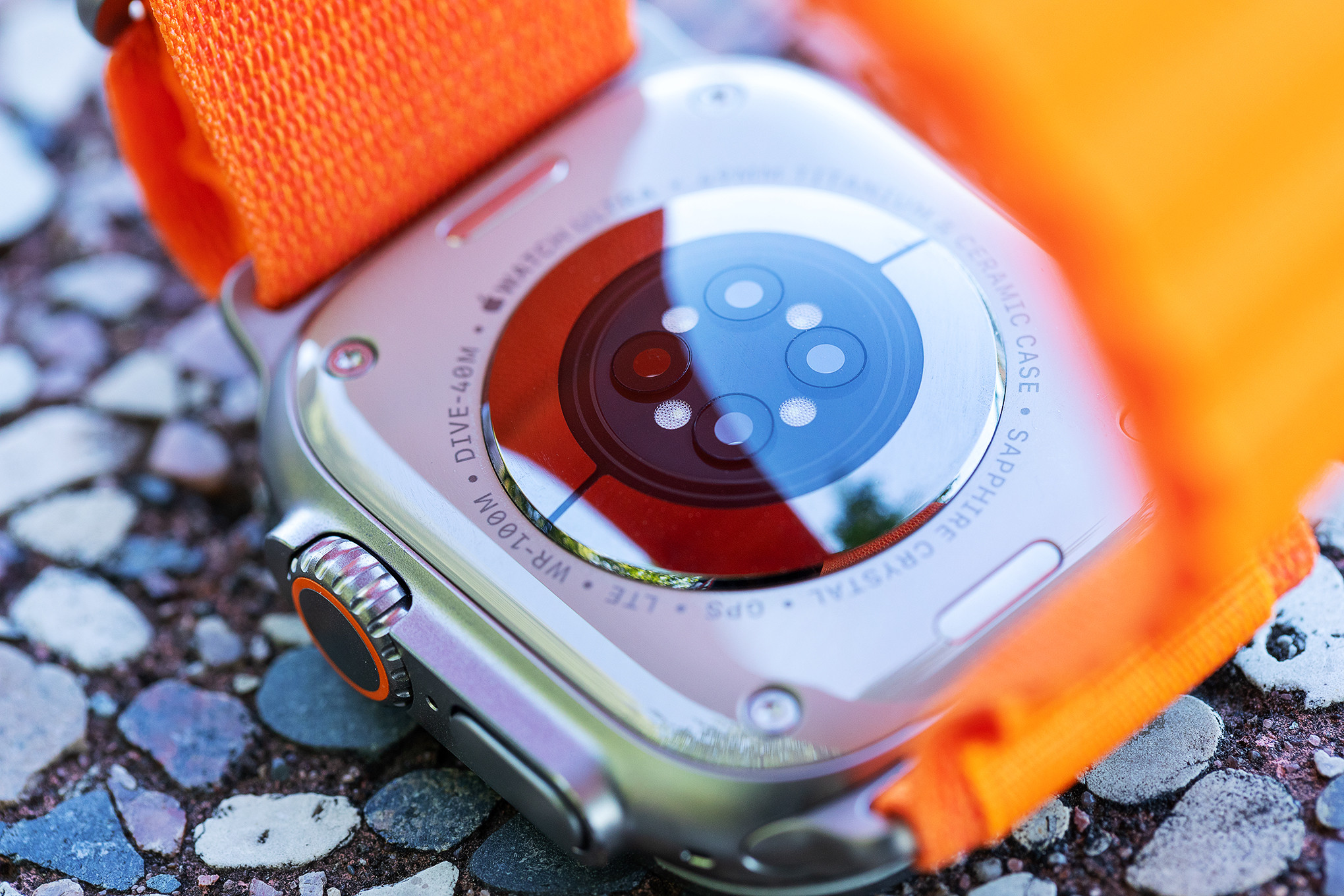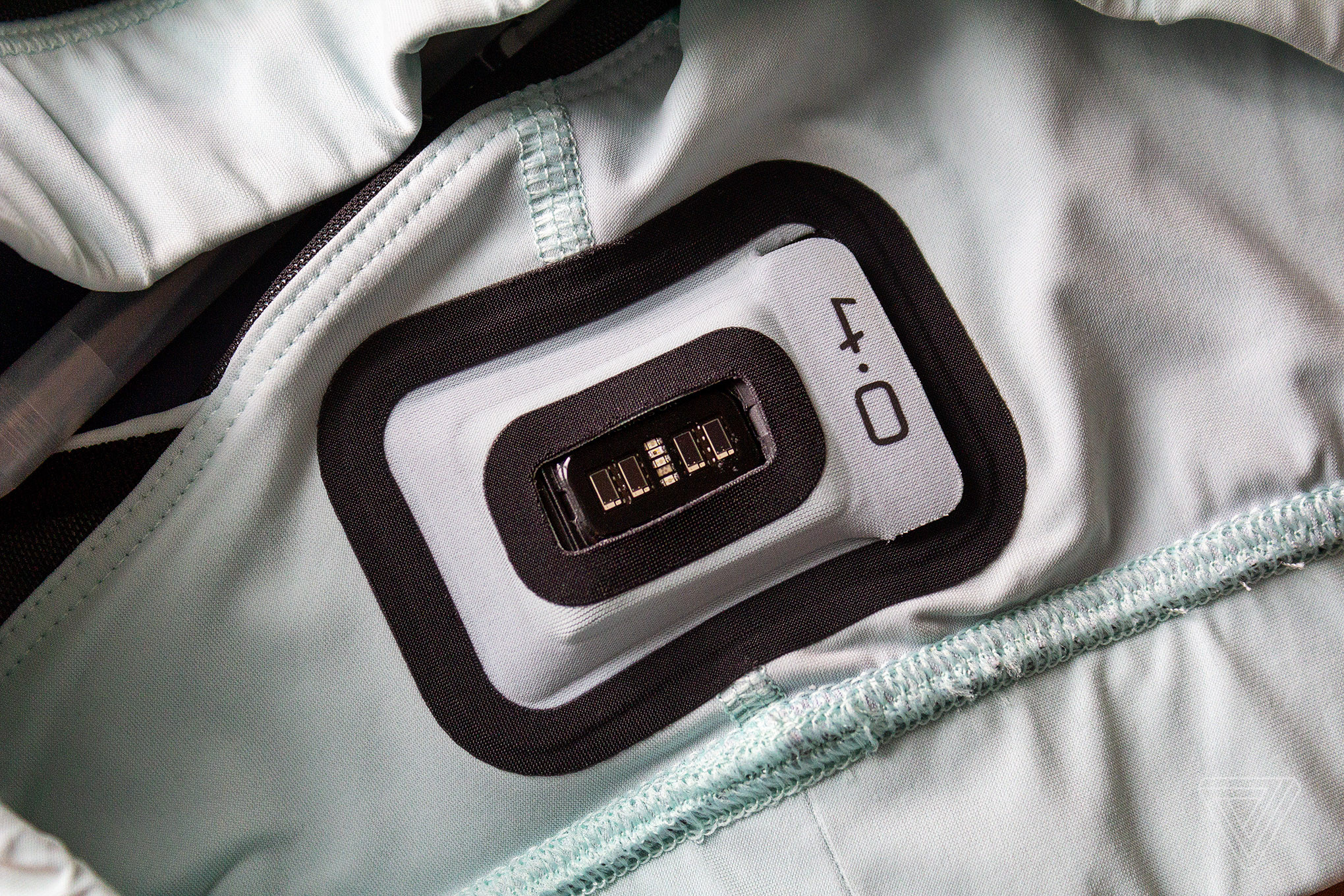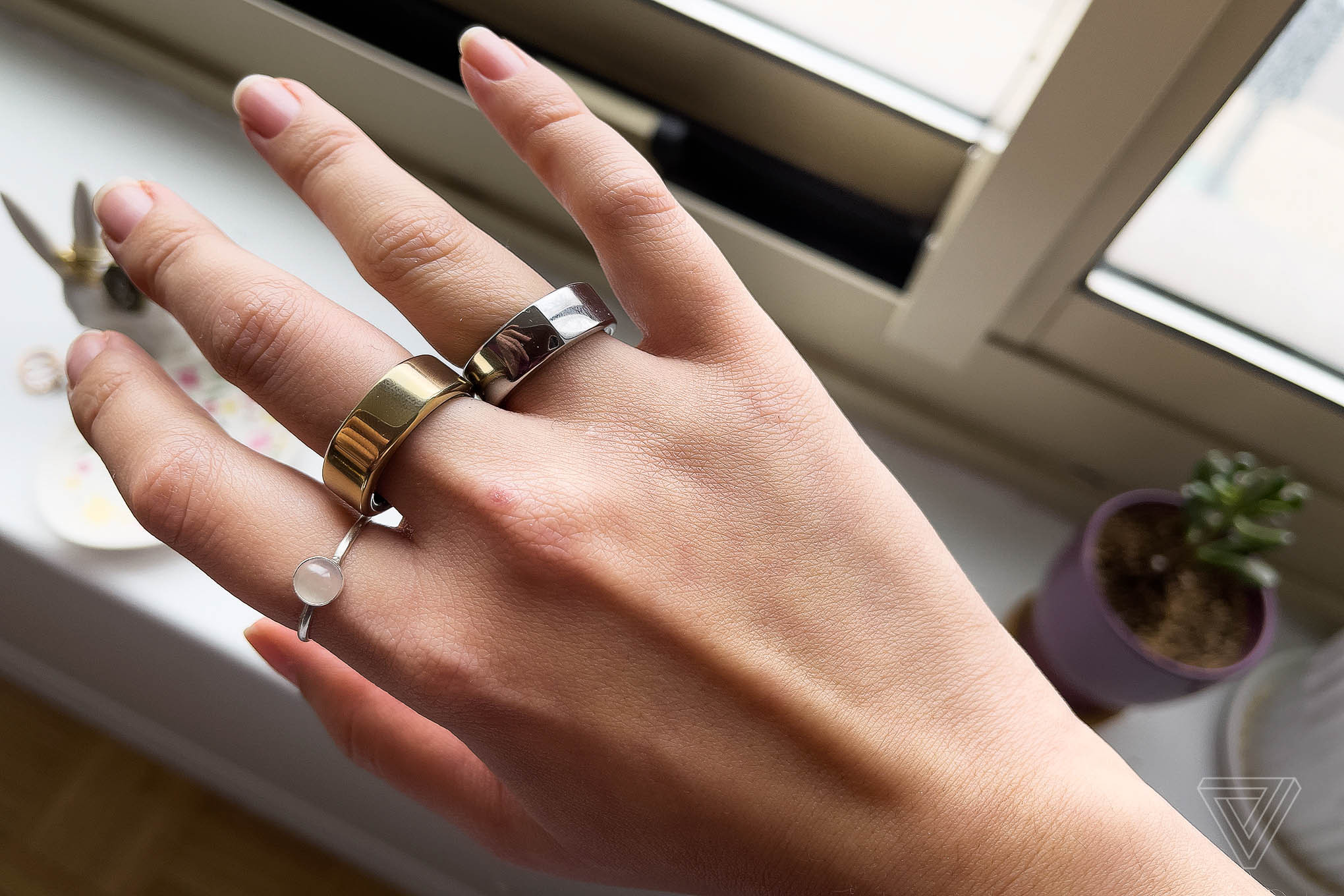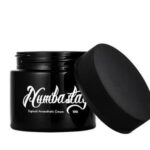Are you wondering, “Do Tattoos Affect Smartwatches?” The answer is yes, tattoos can indeed interfere with the functionality of smartwatches, particularly those relying on optical sensors. At tattooat.com, we’re dedicated to helping you navigate the intersection of body art and technology, ensuring you can enjoy both your tattoos and your tech. We offer solutions and insights to make these coexist.
1. How Do Tattoos Interfere With Smartwatch Functionality?
Tattoos can interfere with smartwatch functionality, primarily due to the technology these devices use to monitor your health metrics. Most smartwatches rely on photoplethysmography (PPG) sensors, which use light to measure heart rate and other vital data.
1.1. The Science Behind PPG Sensors and Tattoo Interference
PPG sensors work by shining light into your skin and measuring the amount of light reflected back. This reflected light helps the device determine your heart rate, blood oxygen levels, and other health metrics. However, darker colors, including dark tattoo ink, absorb more light and reflect less, which can disrupt the sensor’s ability to accurately read your biometric data. According to research from Portland State University’s Art Department, dense tattoo designs and darker inks are most likely to cause interference with PPG sensors.
1.2. Specific Issues Caused by Tattoos
- Inaccurate Heart Rate Readings: Tattoos can cause your smartwatch to provide incorrect or inconsistent heart rate readings.
- Wrist Detection Problems: Some smartwatches may not recognize that you are wearing them if the sensors are covered by a tattoo.
- Workout Tracking Issues: Inaccurate data can affect the accuracy of workout tracking and fitness metrics.
- Compromised Body Composition Analysis: Certain features, like body composition analysis on devices like the Samsung Galaxy Watch, may be affected.
1.3. Which Types of Tattoos Cause the Most Problems?
Generally, tattoos with dense designs and darker inks cause the most significant interference. Lighter-colored tattoos or those with less saturated ink may not pose as much of a problem. However, the placement of the tattoo relative to the sensor is also crucial. Tattoos directly under the sensor are more likely to cause issues than those on the side of the wrist.
 Apple Watch Ultra showing its sensors, illustrating how tattoos might interfere with the sensor readings
Apple Watch Ultra showing its sensors, illustrating how tattoos might interfere with the sensor readings
2. What Are Some Workarounds for Using Smartwatches With Tattoos?
If you have tattoos and want to use a smartwatch, several workarounds can help mitigate the interference issues. These range from simple fixes to alternative wearable options.
2.1. Epoxy Stickers: A Simple Hack
One popular and inexpensive hack is using epoxy bottlecap stickers. These stickers, typically available for under $10 on Amazon for a pack of 50-100, can be placed over the sensor array on the back of the smartwatch.
- How They Work: Epoxy stickers create a uniform surface that helps the sensor read data more consistently.
- User Experiences: Many users have reported that these stickers improve wrist detection and heart rate monitoring.
- Potential Drawbacks: Some features, like body composition analysis on certain Samsung Galaxy Watches, may be affected by using the stickers.
2.2. Chest Straps: A Reliable Alternative
For accurate heart rate data during exercise, chest straps are an excellent alternative. Unlike smartwatches, chest straps use electrocardiography (ECG) to measure heart rate, which is not affected by tattoos.
- How They Work: Chest straps use electrodes to detect the electrical activity of your heart, providing a direct and accurate heart rate measurement.
- Popular Options: Models like the Polar H10 and Garmin HRM-Dual are well-regarded for their accuracy and reliability.
- Connectivity: Many chest straps connect to smartphones and gym equipment via Bluetooth and ANT Plus.
- Comfort Considerations: While highly accurate, chest straps may not be as comfortable for all-day wear and can sometimes cause chafing.
2.3. Smart Rings: A Discreet Option
Smart rings are another wearable option that can bypass tattoo interference, provided you have untattooed fingers. These rings offer all-day fitness tracking in a more discreet and comfortable form factor.
- Why They Work: Smart rings use PPG sensors on the underside of the finger, where there is typically less melanin and tattoo ink to interfere with the readings.
- The Oura Ring: The Oura Ring is one of the most popular smart rings, offering sleep tracking, heart rate monitoring, blood oxygen monitoring, and more.
- Future Options: Keep an eye on emerging smart rings like the Evie Ring, which aims to provide medical-grade health tracking.
- Potential Drawbacks: Smart rings may lack some of the proactive health features found in advanced smartwatches, such as abnormal heart rate alerts and push notifications.
2.4. Arm-Based Heart Rate Monitors
Arm-based heart rate monitors offer a comfortable and convenient alternative if you have a free patch of skin on your arm or forearm.
- How They Work: These devices use optical sensors to measure heart rate from the arm, providing more accurate readings than wrist-based devices when tattoos are present.
- Popular Options: The Polar OH1 and the Peloton Arm Band are popular choices.
- Advantages: Arm-based monitors are more comfortable than chest straps and allow for easy viewing of heart rate zones.
2.5. Earbud Heart Rate Monitors
Some earbuds now come with built-in heart rate monitoring capabilities, offering another alternative to wrist-worn devices.
- How They Work: These earbuds use sensors to measure heart rate from inside the ear.
- Examples: The Amazfit Powerbuds Pro and the Anker Soundcore Liberty 4 are notable options.
- Accuracy: The ear can provide more accurate readings than the wrist, provided the earbuds fit properly.
2.6. Alternative Wearable Placements with Whoop
The Whoop 4.0 fitness tracker offers a unique solution by allowing you to wear the device on various parts of your body, thanks to its compatible clothing line.
- How It Works: Whoop offers specially-made bras, shirts, and arm sleeves that have pockets for the tracker.
- Benefits: This allows you to take heart rate readings from areas less likely to be affected by tattoos.
- Accuracy: Whoop claims its tracker has been validated for use on the arm, wrist, torso, leg, and waist.
 A Whoop 4.0 fitness tracker placed in a sports bra, showing an alternative placement for accurate readings
A Whoop 4.0 fitness tracker placed in a sports bra, showing an alternative placement for accurate readings
3. Why Are PPG Sensors Flawed?
PPG sensors are a convenient way to monitor health metrics, but they have inherent limitations, particularly when it comes to darker skin tones and tattoos.
3.1. Light Absorption and Reflection
The fundamental issue is that darker colors absorb more light and reflect less. This means that the darker the tattoo ink, the harder it is for the PPG sensor to get an accurate reading. This is not a new problem either, in 2022, multiple articles came out mentioning “Apple, Fitbit heart rate sensor accuracy questioned for people with darker skin tones”.
3.2. Algorithm Limitations
While companies are constantly refining their algorithms to improve accuracy, these algorithms cannot overcome the basic physics of light absorption and reflection.
3.3. The Need for Alternative Technologies
To truly address the issue of tattoo interference, wearable tech companies need to explore and implement alternative sensor technologies that are not reliant on light reflection.
4. Designing Tattoos With Wearable Tech in Mind
If you’re planning to get a new tattoo and want to ensure compatibility with your smartwatch, there are steps you can take to minimize potential interference.
4.1. Placement Considerations
- Avoid the Wrist: If possible, avoid getting tattoos on the top of your wrists, where smartwatches typically sit.
- Consider the Sensor Location: Take note of where the sensor array will sit on your skin and work with your tattoo artist to design around it.
4.2. Design Choices
- Lighter Inks: Opt for lighter-colored inks that reflect more light.
- Less Dense Designs: Choose designs that are less dense and have more spacing between the ink.
4.3. Consulting With Your Tattoo Artist
Talk to your tattoo artist about your concerns regarding smartwatch compatibility. They may have suggestions for designs and ink choices that can minimize interference.
5. The Future of Wearable Tech and Tattoos
The wearable tech industry is continually evolving, and there is hope for more tattoo-friendly devices in the future.
5.1. Advances in Sensor Technology
Researchers are exploring new sensor technologies that do not rely on light reflection, such as ultrasound or radiofrequency-based sensors.
5.2. Software Improvements
Companies are also working on software improvements that can better compensate for the effects of tattoos and skin tone on sensor readings.
5.3. Personalized Calibration
Future devices may offer personalized calibration options that allow users to adjust the sensor settings based on their skin tone and tattoo placement.
6. What Smartwatch Brands Are Most Affected By Tattoos?
Different smartwatch brands and models may exhibit varying degrees of sensitivity to tattoos due to differences in sensor technology and software algorithms.
6.1. Apple Watch
The Apple Watch, known for its advanced health tracking features, has been reported to have issues with tattoo interference. Users with tattoos on their wrists have experienced problems with wrist detection and inaccurate heart rate readings. Apple has acknowledged this issue and suggests that tattoos can disrupt the watch’s ability to function correctly.
6.2. Samsung Galaxy Watch
Samsung Galaxy Watches also use PPG sensors and can face similar challenges with tattoos. Some users have reported that tattoos interfere with heart rate monitoring and features like body composition analysis. Using epoxy stickers has been a common workaround for Samsung Galaxy Watch users.
6.3. Fitbit
Fitbit devices, which are popular for fitness tracking, also rely on optical heart rate sensors. Tattoos can affect the accuracy of heart rate readings and workout tracking on Fitbit devices. Users have found that the placement of the tattoo and the density of the ink can significantly impact performance.
6.4. Garmin
Garmin smartwatches, often used by athletes, can also be affected by tattoos. While Garmin devices are known for their accuracy, the presence of tattoos can still interfere with the optical heart rate sensors. Chest straps are often recommended as an alternative for more accurate heart rate data during workouts.
6.5. Other Brands
Other smartwatch brands like Polar, Xiaomi, and Huawei also use PPG sensors, making them susceptible to tattoo interference. The severity of the issue can vary depending on the specific model and the individual’s tattoo characteristics.
Table: Smartwatch Brands and Tattoo Interference
| Brand | Models Affected | Common Issues | Workarounds |
|---|---|---|---|
| Apple Watch | All models | Wrist detection, inaccurate heart rate readings | Epoxy stickers, alternative wearable placements |
| Samsung Galaxy | All models | Heart rate monitoring, body composition analysis | Epoxy stickers, alternative wearable placements |
| Fitbit | All models | Heart rate readings, workout tracking | Alternative wearable placements |
| Garmin | All models | Heart rate monitoring | Chest straps, alternative wearable placements |
| Polar | All models | Heart rate monitoring | Chest straps, alternative wearable placements |
| Xiaomi | All models | Heart rate monitoring | Alternative wearable placements |
| Huawei | All models | Heart rate monitoring | Alternative wearable placements |
7. Can Tattoo Ink Color Affect Smartwatch Accuracy?
Yes, tattoo ink color can significantly affect smartwatch accuracy. The way a smartwatch’s optical sensors (PPG sensors) work is by shining light onto the skin and measuring the amount of light that is reflected back. Different colors absorb and reflect light differently, which can impact the sensor’s ability to accurately read biometric data.
7.1. Dark Colors
Darker colors, such as black, dark blue, and dark green, absorb more light. When a tattoo is made with dark ink, the sensor struggles to capture enough reflected light to produce an accurate reading. This often leads to lower accuracy or complete failure in detecting heart rate and other metrics.
7.2. Light Colors
Lighter colors like white, light pink, and light yellow reflect more light. Tattoos with lighter inks are less likely to interfere with the smartwatch’s sensors because they allow more light to bounce back, providing better data for the device to analyze.
7.3. Red Ink
Red ink can be problematic because it absorbs green light, which is commonly used in optical heart rate sensors. This absorption can reduce the accuracy of heart rate readings.
7.4. Color Saturation
The saturation of the ink also plays a role. Highly saturated, dense tattoos are more likely to cause interference compared to faded or less saturated tattoos, regardless of the color.
7.5. Metallic Inks
Metallic inks, such as gold or silver, can reflect light in unpredictable ways, which can also disrupt the sensor readings.
Table: Impact of Tattoo Ink Color on Smartwatch Accuracy
| Ink Color | Light Absorption | Impact on Accuracy |
|---|---|---|
| Black | High | Significant |
| Dark Blue | High | Significant |
| Dark Green | High | Significant |
| Red | Moderate | Moderate |
| Light Pink | Low | Minimal |
| Light Yellow | Low | Minimal |
| White | Low | Minimal |
| Metallic | Variable | Variable |
8. How Do Different Tattoo Styles Impact Smartwatch Performance?
Different tattoo styles can impact smartwatch performance due to variations in ink density, line thickness, and overall design complexity. The more intricate and dense a tattoo, the higher the likelihood of it interfering with the smartwatch’s sensors.
8.1. Traditional Tattoos
Traditional tattoos often feature bold, solid lines and densely packed designs. The high ink density in these tattoos can significantly interfere with optical sensors, leading to inaccurate readings.
8.2. Minimalist Tattoos
Minimalist tattoos, characterized by fine lines and sparse ink usage, are less likely to cause issues. The lower ink density allows more light to reflect back to the sensor, improving accuracy.
8.3. Watercolor Tattoos
Watercolor tattoos use soft, blended colors with varying levels of saturation. While the colors may be lighter, the blended nature can still affect light reflection, potentially causing moderate interference.
8.4. Blackwork Tattoos
Blackwork tattoos involve large areas of solid black ink. These are among the most problematic for smartwatch performance due to their extreme light absorption.
8.5. Geometric Tattoos
Geometric tattoos can vary in ink density. If the geometric shapes are filled with solid ink, they can cause significant interference. However, if they consist of fine lines with open spaces, the impact may be minimal.
8.6. Realism Tattoos
Realism tattoos aim to replicate images with detailed shading and color gradients. The complexity and varying ink densities can lead to unpredictable effects on smartwatch sensors.
8.7. Tribal Tattoos
Tribal tattoos typically feature bold, black patterns with high ink density. These are likely to cause significant interference with smartwatch sensors.
Table: Impact of Tattoo Style on Smartwatch Performance
| Tattoo Style | Ink Density | Complexity | Impact on Performance |
|---|---|---|---|
| Traditional | High | Moderate | Significant |
| Minimalist | Low | Low | Minimal |
| Watercolor | Variable | Moderate | Moderate |
| Blackwork | High | Low | Significant |
| Geometric | Variable | Variable | Variable |
| Realism | Variable | High | Variable |
| Tribal | High | Moderate | Significant |
9. Are There Any Smartwatches Designed to Work Better With Tattoos?
Currently, there are no smartwatches specifically designed to work flawlessly with tattoos. However, some devices may perform better than others due to variations in sensor technology and software optimization.
9.1. Sensor Technology
Some smartwatches use advanced sensor technologies that may be less susceptible to interference from tattoos. For example, devices with improved infrared sensors or alternative measurement methods could potentially offer better accuracy.
9.2. Software Optimization
Smartwatch manufacturers are continuously updating their software to improve sensor accuracy. Some updates may include algorithms that better compensate for skin tone and tattoo interference.
9.3. User Calibration
The ability to calibrate a smartwatch to account for individual skin characteristics and tattoos could significantly improve accuracy. Some devices may offer customizable settings that allow users to adjust sensor sensitivity.
9.4. Research and Development
Ongoing research and development in wearable technology may lead to the creation of smartwatches that are specifically designed to overcome the challenges posed by tattoos. This could involve the use of entirely new sensor technologies or innovative software solutions.
9.5. Alternative Wearable Options
While not specifically designed for tattoos, alternative wearable options like chest straps, arm-based monitors, and smart rings offer solutions that bypass the wrist-based sensor limitations.
Table: Potential Smartwatch Features for Better Tattoo Compatibility
| Feature | Description | Benefit |
|---|---|---|
| Advanced IR Sensors | Uses improved infrared sensors to measure biometric data. | Potentially less susceptible to tattoo interference. |
| Software Optimization | Includes algorithms that compensate for skin tone and tattoo effects. | Improved accuracy in the presence of tattoos. |
| User Calibration | Allows users to calibrate the device to account for individual skin characteristics and tattoos. | Personalized and more accurate readings. |
| Alternative Technology | Employs sensor technologies that do not rely on light reflection. | Bypasses the fundamental issues caused by tattoos. |
| Alternative Placement | Designed to be worn on different parts of the body, such as the arm or chest. | Avoids areas with tattoos. |
10. What Are Some Tips For Caring For Your Tattoos If You Wear A Smartwatch?
Wearing a smartwatch over a tattoo requires some extra care to ensure both the device and the tattoo remain in good condition. Here are some tips for caring for your tattoos if you wear a smartwatch:
10.1. Keep It Clean
Regularly clean both your smartwatch and the skin underneath to prevent the buildup of sweat, dirt, and bacteria. Use a soft, damp cloth to wipe down the smartwatch and gently wash the tattooed area with mild, fragrance-free soap.
10.2. Moisturize
Keep the tattooed area moisturized to prevent dryness and irritation. Apply a thin layer of tattoo-friendly moisturizer after washing and whenever the skin feels dry.
10.3. Adjust the Fit
Ensure that your smartwatch is not too tight. A tight fit can cause friction and irritation, especially on a newly tattooed area. Adjust the band to allow for comfortable movement and airflow.
10.4. Take Breaks
Give your skin a break from the smartwatch by removing it for a few hours each day. This allows the skin to breathe and reduces the risk of irritation.
10.5. Protect from Sun
If your tattoo is exposed to sunlight, apply a broad-spectrum sunscreen with a high SPF to prevent fading and damage. Sunscreen is especially important for colored tattoos, which are more prone to fading.
10.6. Monitor for Irritation
Regularly check the tattooed area for any signs of irritation, such as redness, itching, or swelling. If you notice any issues, discontinue wearing the smartwatch until the skin has healed.
10.7. Consult a Professional
If you have any concerns about wearing a smartwatch over your tattoo, consult with a dermatologist or a tattoo artist for personalized advice.
Table: Tips for Tattoo Care While Wearing a Smartwatch
| Tip | Description | Benefit |
|---|---|---|
| Keep It Clean | Regularly clean the smartwatch and the skin underneath with mild soap and water. | Prevents buildup of sweat, dirt, and bacteria, reducing the risk of infection. |
| Moisturize | Apply a thin layer of tattoo-friendly moisturizer to keep the skin hydrated. | Prevents dryness and irritation, promoting healthy skin. |
| Adjust the Fit | Ensure the smartwatch is not too tight to prevent friction and irritation. | Allows for comfortable movement and airflow, reducing skin stress. |
| Take Breaks | Remove the smartwatch for a few hours each day to allow the skin to breathe. | Reduces the risk of irritation and allows the skin to recover. |
| Protect from Sun | Apply sunscreen to the tattooed area when exposed to sunlight. | Prevents fading and damage to the tattoo, maintaining its vibrancy. |
| Monitor Irritation | Regularly check the skin for any signs of irritation, such as redness, itching, or swelling. | Allows for early detection and prevention of potential skin problems. |
| Consult a Pro | Seek advice from a dermatologist or tattoo artist for personalized care recommendations. | Ensures proper care and addresses any specific concerns or issues. |
FAQ: Tattoos and Smartwatches
1. Will a new tattoo affect my smartwatch?
Yes, a new tattoo is more likely to affect your smartwatch due to the increased ink density and potential for inflammation.
2. Can the color of my tattoo ink affect my smartwatch’s readings?
Yes, darker colors absorb more light, which can interfere with the sensor’s accuracy.
3. Are there any smartwatches that work well with tattoos?
No smartwatch is specifically designed to work perfectly with tattoos, but some may perform better than others due to sensor technology and software.
4. Can I use epoxy stickers on any smartwatch?
Epoxy stickers can be used on most smartwatches with PPG sensors, but they may affect certain features like body composition analysis.
5. Are chest straps more accurate than smartwatches for heart rate monitoring?
Yes, chest straps use electrocardiography (ECG) and measure your actual heartbeat, making them more accurate than PPG sensors in smartwatches.
6. Can I design my tattoo to work better with a smartwatch?
Yes, opting for lighter inks, less dense designs, and strategic placement can minimize interference.
7. Will smartwatch companies develop tattoo-friendly devices in the future?
The industry is continually evolving, and there is hope for more tattoo-friendly devices as new sensor technologies are developed.
8. Is it safe to wear a smartwatch over a new tattoo?
It’s best to avoid wearing a smartwatch over a new tattoo until it is fully healed to prevent irritation and infection.
9. Can the placement of my tattoo affect smartwatch accuracy?
Yes, tattoos placed directly under the smartwatch’s sensors are more likely to cause interference.
10. What alternative wearable options are available if tattoos interfere with my smartwatch?
Smart rings, arm-based heart rate monitors, and chest straps are excellent alternatives.
At tattooat.com, we understand the importance of both self-expression and staying connected. Whether you’re seeking design inspiration, looking for a skilled tattoo artist, or need advice on caring for your tattoos, we’re here to support you. Explore our extensive collection of tattoo designs, find reputable artists in your area, and discover expert tips for tattoo aftercare. Let tattooat.com be your guide to the vibrant world of tattoos.
Address: 1825 SW Broadway, Portland, OR 97201, United States
Phone: +1 (503) 725-3000
Website: tattooat.com
 The Oura Ring Gen 3 being worn, showcasing a discreet fitness tracking option
The Oura Ring Gen 3 being worn, showcasing a discreet fitness tracking option
Ready to explore the world of tattoos? Visit tattooat.com today to discover stunning designs, find talented artists, and get all the information you need to make your tattoo dreams a reality.
